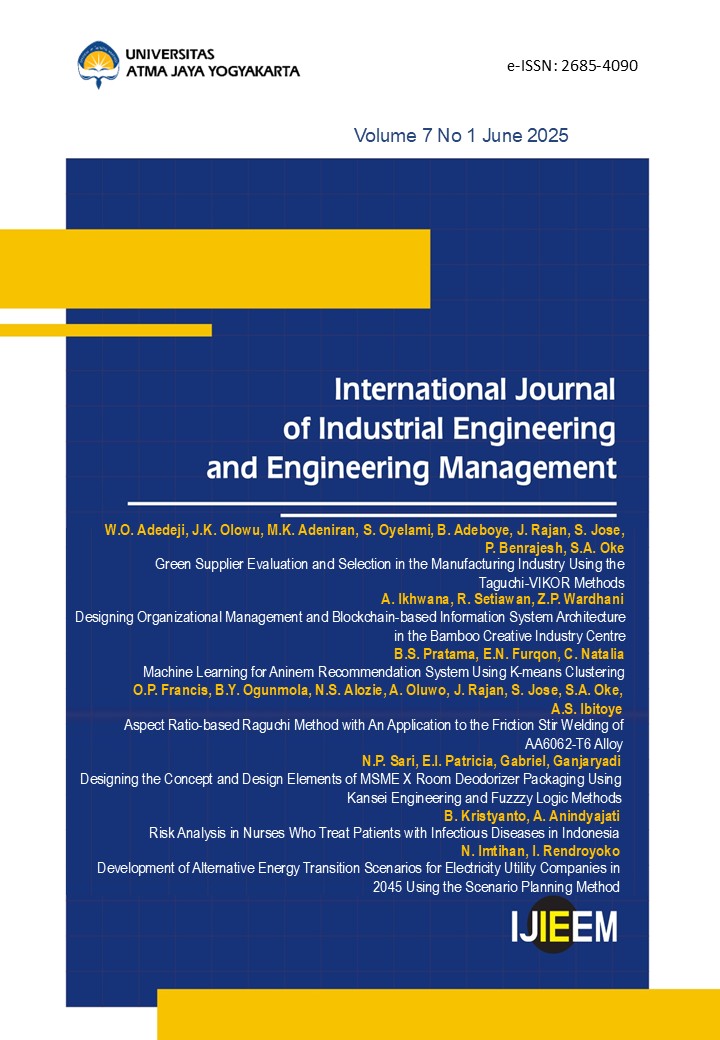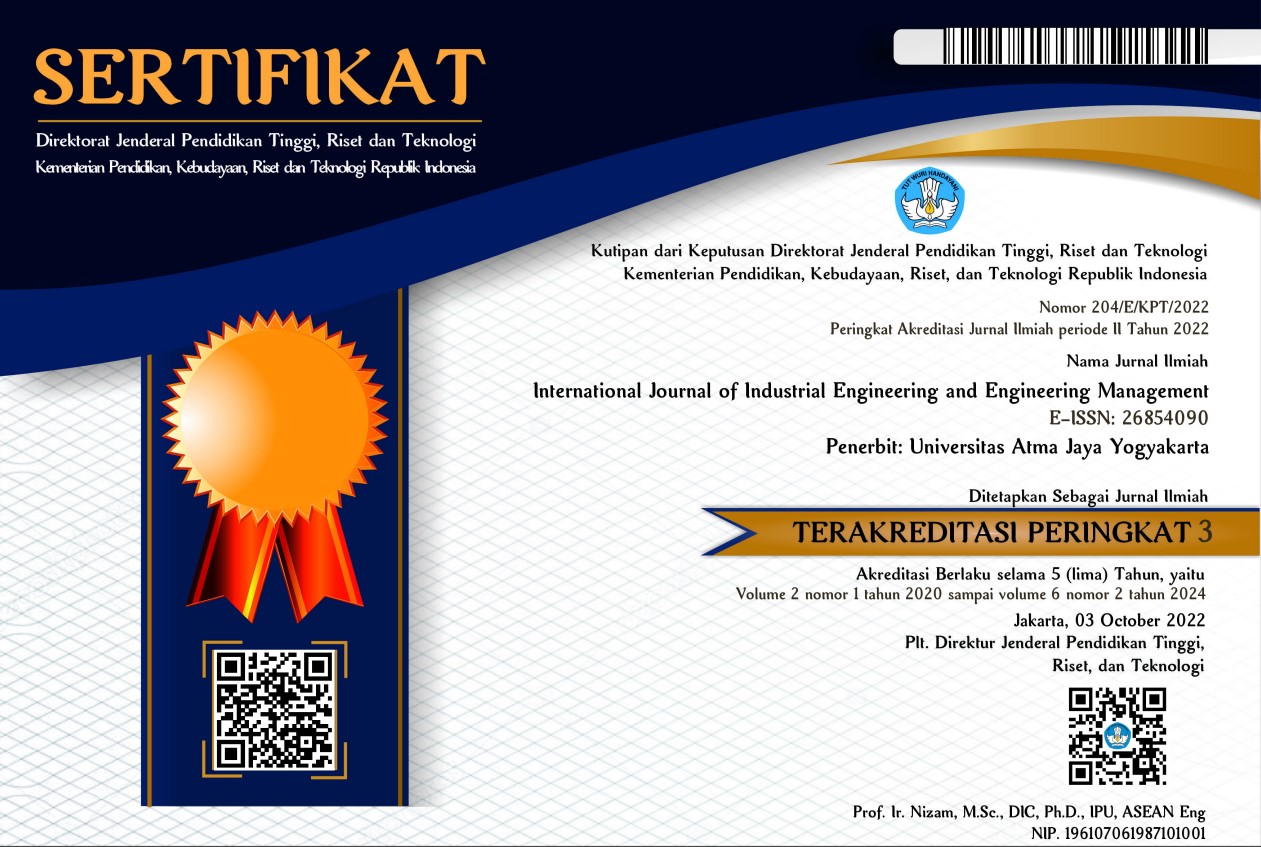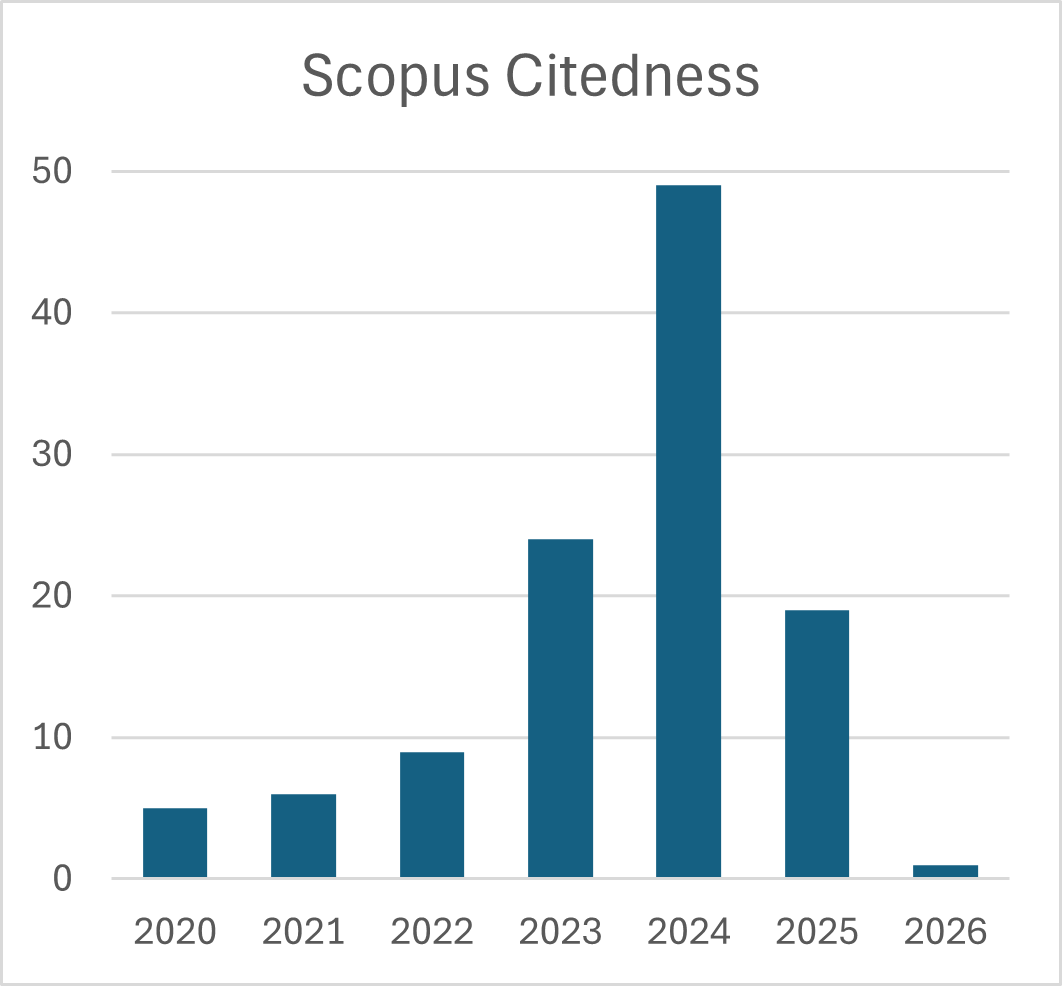Designing Organizational Management and Blockchain-based Information System Architecture in the Bamboo Creative Industry Center
DOI:
https://doi.org/10.24002/ijieem.v7i1.8161Keywords:
Bamboo Industry, Blockchain Technology, Information Systems, Organizational Management, Prototyping, star modelAbstract
Indonesia boasts a wide range of bamboo species and is among the largest manufacturers of bamboo in Asia. However, the Garut Bamboo Creative Industry Center, one of Indonesia's bamboo industries, encounters various challenges in managing this industry. This study is assumed to recognize the need for adaptation to changing times and more efficient management in the bamboo industry supply chain. The aim is to design an organization management and information system architecture based on blockchain technology. The methodology applied the Star Model and prototyping approach, leading to the development of a strategy, an association-based organizational structure, structured business processes, a balanced reward system, and the placement of human resources based on their qualifications. It enables product tracking and increases operational efficiency by integrating blockchain technology into warehouse and production information systems. It also proposes innovative solutions to ensure growth and sustainable development. The study suggests recommendations, including implementing blockchain technology as a product management and supply chain enhancement solution to support the bamboo company's growth and aspirations.
References
Ahmed, S., & Demirel, H. (2020). A Conceptual Prototyping Framework for Integrating Human Factors Early in Product Design. Paper presented at the ASME 2020 International Mechanical Engineering Congress and Exposition IMECE 2020, Portland, USA.
Amorita, C., Daryanto, A., & Sahara. (2021). Competitiveness Analysis of Indonesian Pepper in the International Market. International Journal of Research and Review, 8(5), 38–52.
Azzi, R., Chamoun, R. K., & Sokhn, M. (2019). The power of a blockchain-based supply chain. Computers & Industrial Engineering, 135, 582–592.
Braun, V., & Clarke, V. (2006). Using thematic analysis in psychology. Qualitative Research in Psychology, 3(2), 77–101.
Büyüközkan, G., & Göçer, F. (2018). Digital Supply Chain: Literature review and a proposed framework for future research. Computers in Industry, 97, 157–177.
Casino, F., Dasaklis, T. K., & Patsakis, C. (2019). A systematic literature review of blockchain-based applications: Current status, classification, and open issues. Telematics and Informatics, 36, 55–81.
Choi, T.M., Wen, X., Sun, X., & Chung, S.H. (2019). The mean-variance approach for global supply chain risk analysis with air logistics in the blockchain technology era. Transportation Research Part E: Logistics and Transportation Review, 127, 178–191.
Daft, R.L., & Armstrong, A. (2021). Organization Theory and Design (4th edition). Canada: Cengage.
Farhani, P., Meier, C., & Wilke, J. (2017). Digital Supply Chain Management Agenda for the Automotive Supplier Industry BT - Shaping the Digital Enterprise: Trends and Use Cases in Digital Innovation and Transformation (G. Oswald & M. Kleinemeier (eds.); pp. 157–172). Springer International Publishing.
Feng, J., Zhao, X., Chen, K., Zhao, F., & Zhang, G. (2020). Towards random-honest miners selection and multi-blocks creation: Proof-of-negotiation consensus mechanism in blockchain networks. Future Generation Computer Systems, 105, 248–258.
Frizzo-Barker, J., Chow-White, P. A., Adams, P. R., Mentanko, J., Ha, D., & Green, S. (2020). Blockchain as a disruptive technology for business: A systematic review. International Journal of Information Management, 51, Article 102029.
Galbraith, J. R. (2009). The Star Model Summary. The STAR Model, 07/04/2017, 1–6. http://www.jaygalbraith.com/images/pdfs/StarModel.pdf
Georgiev, V., & Stefanova, K. (2014). Software development methodologies for reducing project risks. Economic Alternatives, 2, 104-113.
Górski, T., & Bednarski, J. (2019). Modeling of Smart Contracts in Blockchain Solution for Renewable Energy Grid. International Conference/ on Computer-Aided Systems Theory, 507-514
Górski, T., & Bednarski, J. (2019, February). Modeling of smart contracts in blockchain solution for renewable energy grid. In International Conference on Computer Aided Systems Theory (pp. 507-514). Cham: Springer International Publishing.
Hughes, A., Park, A., Kietzmann, J., & Archer-Brown, C. (2019). Beyond Bitcoin: What blockchain and distributed ledger technologies mean for firms. Business Horizons, 62(3), 273–281.
Hutchinson, J. E., Whittle, J., & Rouncefield, M. (2014). Model-driven engineering practices in industry: Social, organizational and managerial factors that lead to success or failure. Science of Computer Programming, 89, 144–161.
Juma, H., Shaalan, K., & Kamel, I. (2019). A Survey on Using Blockchain in Trade Supply Chain Solutions. IEEE Access, 7, 184115–184132.
Junqi, W., Jiaojiao, C., & Smith, A. G. (2021). The International Bamboo and Rattan Organisation Copyright and Fair Use. www.inbar.int
Kaehler, B., Grundei, J., Kaehler, B., & Grundei, J. (2019). The concept of management: In search of a new definition. HR governance: A Theoritical introduction, 3-26.
Kinicki, A., & Williams, B.K. (2018). Management A Practical Introduction. New York: McGrawHill.
Köhler, S., & Pizzol, M. (2019). Life Cycle Assessment of Bitcoin Mining. Environmental Science & Technology, 53(23), 13598–13606.
Kshetri, N. (2018). 1 Blockchain’s roles in meeting key supply chain management objectives. International Journal of Information Management, 39, 80–89.
Lim, M. K., Li, Y., Wang, C., & Tseng, M. L. (2021). A literature review of blockchain technology applications in supply chains: A comprehensive analysis of themes, methodologies, and industries. Computers and Industrial Engineering, 154, Article 107133.
Liu, Z., & Li, Z. (2020). A blockchain-based framework of cross-border e-commerce supply chain. International Journal of Information Management, 52, Article 102059.
Pandey, P., & Litoriya, R. (2020). Implementing healthcare services on a large scale: Challenges and remedies based on blockchain technology. Health Policy and Technology, 9(1), 69–78.
Peffers, K., Tuunanen, T., Rothenberger, M. A., & Chatterjee, S. (2007). A Design Science Research Methodology for Information Systems Research. Journal of Management Information Systems, 24, 45–77.
Reggio, G., Leotta, M., & Ricca, F. (2014). Who Knows/Uses What of the UML: A Personal Opinion Survey. ACM/IEEE International Conference on Model Driven Engineering Languages and Systems. https://api.semanticscholar.org/CorpusID:33088018
Saberi, S., Kouhizadeh, M., Sarkis, J., & Shen, L. (2018). Blockchain technology and its relationships to sustainable supply chain management. International Journal of Production Research, 57, 2117–2135.
Shah, A. (2001). A Framework for the Prototype-based Software Development Methodologies. Journal of King Saud University - Computer and Information Sciences, 13, 111–131.
Thramboulidis, K., & Christoulakis, F. (2016). UML4IoT - A UML-based approach to exploit IoT in cyber-physical manufacturing systems. Computers in Industry, 82, 259–272.
Xu, X., Weber, I., & Staples, M. (2019). Architecture for Blockchain Applications. Springer
Zachariadis, M., Hileman, G., & Scott, S. V. (2019). Governance and control in distributed ledgers: Understanding the challenges facing blockchain technology in financial services. Information and Organization, 29(2), 105–117.
Downloads
Published
How to Cite
Issue
Section
License
Copyright (c) 2025 Andri Ikhwana, Ridwan Setiawan, Zamilla Putri Wardhani

This work is licensed under a Creative Commons Attribution 4.0 International License.








